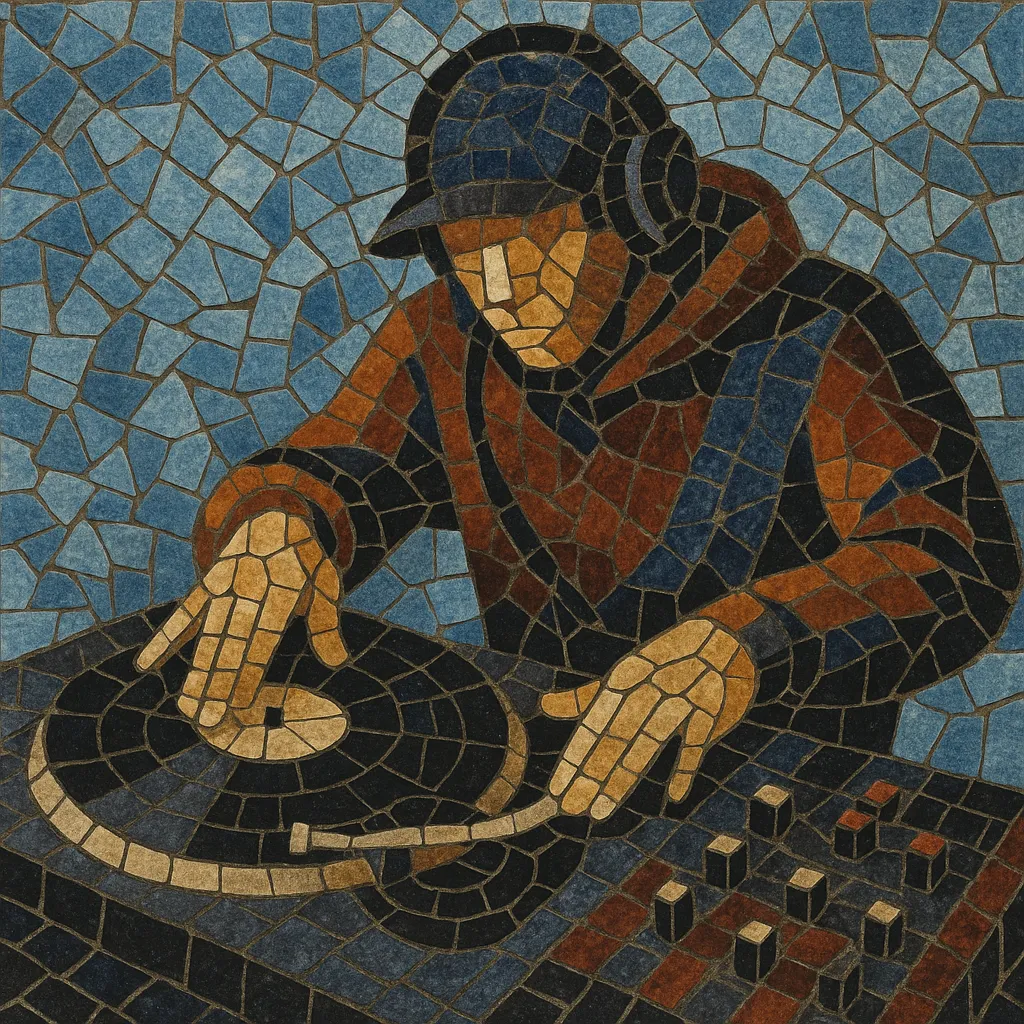
Turntablism is the art of using turntables and a DJ mixer as expressive musical instruments, rather than merely devices to play records. Practitioners manipulate vinyl (or digital vinyl systems) to create new rhythms, textures, and melodies through techniques such as scratching, beat juggling, cutting, and tone play.
Rooted in the earliest hip hop DJ practices, turntablism elevates the DJ to a performer-composer who constructs real-time collages from breakbeats, snippets, tones, and vocal cuts. The genre values manual dexterity, rhythmic precision, improvisation, and showmanship, and it thrives both in live battle formats and in studio-produced routines and compositions.
Turntablism grew out of the Bronx block-party scene in the United States during the 1970s. Pioneering hip hop DJs such as Kool Herc extended funk and disco breakbeats for dancers, while innovators like Grandmaster Flash developed cutting and quick-mix techniques. Grand Wizzard Theodore is widely credited with popularizing scratching, a foundational gesture of the form. Although the word “turntablism” did not yet exist, the idea of the turntable as an instrument was firmly established.
Through the 1980s, hip hop’s expansion and the rise of battle culture codified a vocabulary of techniques: scratching variants (baby, transform, chirp), cutting, and especially beat juggling—rearranging drum breaks across two copies of the same record to create new rhythms. The DMC World DJ Championships (launched mid-1980s) and later ITF/IDA competitions provided global stages for technical innovation and showmanship. In the early-to-mid 1990s, DJ Babu (Beat Junkies) and peers popularized the term “turntablism” to distinguish performance-focused, instrument-like DJing from club mixing. Crews such as Invisibl Skratch Piklz, X-ecutioners, and Beat Junkies pushed technique, ensemble routines, and composition.
The 2000s introduced digital vinyl systems (e.g., Serato, Traktor), enabling precise cueing, looping, and library access while preserving tactile platter control. Turntablists integrated tone play (melodic manipulation of pitched samples), complex multi-deck routines, and hybrid setups with samplers and controllers. Online platforms spread battle culture, tutorials, and collaborations worldwide. Today, turntablism spans battle circuits, concert halls, and studios, influencing genres from instrumental hip hop and trip hop to big beat, glitch hop, and even nu metal.
Use two high-torque direct-drive turntables (battle-style orientation is common) and a DJ battle mixer with a sharp, adjustable crossfader curve and short cut-in distance. Pair with slipmats, sturdy cartridges/needles, and headphones. A digital vinyl system (DVS) like Serato or Traktor allows precise cueing and looping while retaining tactile control.
Build a library of breakbeats, percussive hits, tones, and vocal phrases. Arrange routines in sections (intro, theme, development, climax, finale) much like a composition. Typical tempos range from ~80–110 BPM (hip hop breaks), but adapt to the material. Mark records/cue points for rapid navigation and reliable phrasing.
Practice foundational scratches (baby, forward, stab) and progress to transform, flare, crab, chirp, twiddle, and orbit variations. Develop beat juggling by alternating downbeats and snares between two identical records to form new grooves. Add tone play by pitching or cueing notes to create melodies and counter-melodies. Incorporate cutting patterns, drumming on the crossfader, and occasional body tricks for showmanship—always keeping timing tight.
Balance density and space: contrast busy scratch passages with clear rhythmic anchors. Use call-and-response between decks, reprise motifs, and modulate energy toward a peak. Maintain key awareness for musical scratches and tone play; tune your source tones or select compatible samples. Layer subtle FX (filters, echo) sparingly to enhance phrasing without masking technique.
Drill with a metronome or drum loops to refine timing. Record and analyze routines, iterating transitions and phrasing. For battles, design a concise, high-impact 3–6 minute routine highlighting signature techniques and musical ideas. For studio work, multitrack individual scratch layers for clarity and arrange like an instrumental composition.

